MITRAGYNINE PICRATE
- CAS NO.:4098-40-2
- Empirical Formula: C23H30N2O4
- Molecular Weight: 398.5
- MDL number: MFCD00189432
- EINECS: 200-659-6
- SAFETY DATA SHEET (SDS)
- Update Date: 2025-07-04 15:21:50
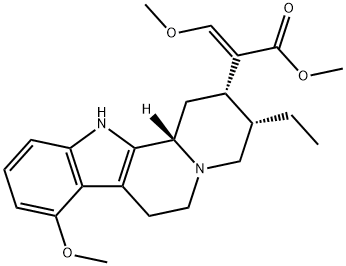
What is MITRAGYNINE PICRATE?
Description
This alkaloid has been isolated from Mitragyna speciosa Korth, and is amorphous
although it yields a series of crystalline salts and derivatives. The hydrochloride
crystallizes as colourless leaflets from EtOH-Et20 with m.p. 243°C; the picrate
forms thin, orange-red needles, m.p. 223-4°C and the methiodide is a pale
yellow powder which, although amorphous, has a sharp melting point of
21 1. 5°C. The alkaloid also forms compounds with acetic acid, m.p. 142°C,
decomposing at 175-6°, and with trichloroacetic acid, m.p. 157°C.
Mitragynine exerts a general depressant effect on plain muscle and facilitates
the passage of autonomic impulses. It is, however, ineffective against pathogenic
organisms.
Description
Mitragynine is the predominant alkaloid produced by the southeastern Asian plant?Mitragyna speciosa?Korth., a member of the coffee family (Rubiaceae). It was isolated in 1921 by Ellen Field, a medicinal chemist at the University of Edinburgh.
M. speciosa, known locally as kratom, has been used in traditional medicine for ≈200 years. It has opiate-like properties and has been used to treat chronic pain and opioid withdrawal symptoms. More recently, it has come into recreational use. Clinical studies on kratom and mitragynine are just beginning.
In September 2016, the US Drug Enforcement Administration (DEA)?designated kratom, mitragynine, and one of its derivatives as Schedule I substances. Schedule 1 is the most restrictive category under the US Controlled Substances Act. DEA cited the lack of information on mitragynine and reports of adverse reactions—even death—from taking kratom.
Researchers studying the medical use of mitragynine and its pseudoindoxyl derivative decried the Schedule I classification. One of them, Andrew C. Kruegel at Columbia University, said, “Placing these compounds into Schedule I will erect an enormous barrier to scientific research in this field and will dramatically curtail our work with this exciting plant.”
Chemical properties
White to Off-White Solid
The Uses of MITRAGYNINE PICRATE
Mitragynine is a neurochemical, having both stimulant and opiate-like effects depending on the dosage. Currently, Mitragynine is being investigated for its ability to treat hard drug addiction.
The Uses of MITRAGYNINE PICRATE
A neurochemical, having both stimulant and opiate-like effects depending on the dosage. Currently, Mitragynin is being investigated for its ability to treat hard drug addiction.
Definition
ChEBI: Mitragynine is a monoterpenoid indole alkaloid.
References
Field., J. Chern. Soc., 119,887 (1921)
Raymond-Hamet, Millat., Bull. sci. pharrnacol., 40, 593 (1933)
lng, Raison., J. Chern. Soc., 986 (1939)
Loudon., Chern. Soc. Spec. Publ., 3, 12 (1955)
Hendrickson., Chern. & Ind., 713 (1961)
Joshi, Raymond-Hamet, Taylor., ibid, 573 (1963)
Pharmacology:
Grewal., J. Pharrn. expo Ther., 46,251 (1932)
Properties of MITRAGYNINE PICRATE
| Melting point: | 92-95°C |
| Boiling point: | bp5 230-240° |
| alpha | D +39° (chloroform) |
| Density | 1.22±0.1 g/cm3 (20 ºC 760 Torr) |
| Flash point: | 9℃ |
| storage temp. | -20°C Freezer |
| solubility | Chloroform (Slightly), Methanol (Slightly) |
| form | Solid |
| pka | 18.35±0.60(Predicted) |
| color | Light Orange to Dark Beige to Very Dark Yellow |
Safety information for MITRAGYNINE PICRATE
| Signal word | Danger |
| Pictogram(s) |
 Flame Flammables GHS02  Skull and Crossbones Acute Toxicity GHS06  Health Hazard GHS08 |
| GHS Hazard Statements |
H225:Flammable liquids H370:Specific target organ toxicity, single exposure |
| Precautionary Statement Codes |
P210:Keep away from heat/sparks/open flames/hot surfaces. — No smoking. P260:Do not breathe dust/fume/gas/mist/vapours/spray. P280:Wear protective gloves/protective clothing/eye protection/face protection. P311:Call a POISON CENTER or doctor/physician. P301+P310:IF SWALLOWED: Immediately call a POISON CENTER or doctor/physician. |
Computed Descriptors for MITRAGYNINE PICRATE
New Products
4,4-Difluoropiperidine hydrochloride tert-butyl 9-methoxy-3-azaspiro[5.5]undecane-3-carboxylate Indole Methyl Resin N-Isopropylurea N,N-Dicyclohexylcarbodiimide(DCC) MELDRUMS ACID 5-METHYLISOXAZOLE-4-CARBOXYLIC ACID Magnessium Bis glycinate Zinc ascorbate 1-bromo-2-butyne 2-acetamidophenol 9(10H)-anthracenone Erythrosin B, 4-Piperidinopiperidine 2-((4-morpholinophenylamino) (methylthio) methylene) malononitrile 2,4-dihydroxybenzaldehyde 3-(4-morpholinophenylamino)-5-amino-1H-pyrazole-4-carbonitrile Methyl 2-methylquinoline-6-carboxylate 2,6-dichloro-4-nitropyridine 4-Bromo-2-chlorobenzonitrile 2-(benzylamino)acetic acid hydrochloride 4-(tert-Butoxycarbonylamino)but- 2-ynoic acid 3,4-dihydro-2H-benzo[b][1,4]dioxepine 1-Phenyl-1-cycloprppanecarboxylicacidRelated products of tetrahydrofuran


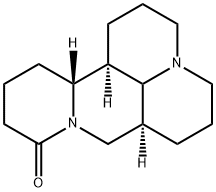
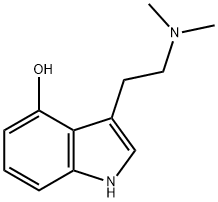
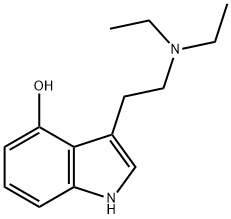
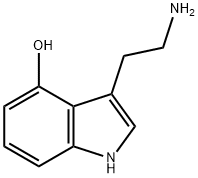
![3-[2-(ETHYL-METHYL-AMINO)-ETHYL]-1H-INDOL-4-OL](https://img.chemicalbook.in/CAS/GIF/77872-41-4.gif)
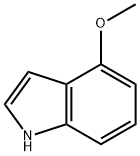
You may like
-
 Mitragynine 98% (HPLC) CAS 4098-40-2View Details
Mitragynine 98% (HPLC) CAS 4098-40-2View Details
4098-40-2 -
 Mitragynine solution CAS 4098-40-2View Details
Mitragynine solution CAS 4098-40-2View Details
4098-40-2 -
 Mitragynine solution CAS 4098-40-2View Details
Mitragynine solution CAS 4098-40-2View Details
4098-40-2 -
 3-(4-amino-1-oxoisoindolin-2-yl)-1-methylpiperidine-2,6-dione 98%View Details
3-(4-amino-1-oxoisoindolin-2-yl)-1-methylpiperidine-2,6-dione 98%View Details -
 20677-73-0 (2,2-diethoxyethyl)methylamine 98%View Details
20677-73-0 (2,2-diethoxyethyl)methylamine 98%View Details
20677-73-0 -
 3-(4-(hydroxyamino)-1-oxoisoindolin-2-yl)piperidine-2,6-dione 98%View Details
3-(4-(hydroxyamino)-1-oxoisoindolin-2-yl)piperidine-2,6-dione 98%View Details -
 57381-49-4 2-bromo-4-chlorobenzonitrile 98%View Details
57381-49-4 2-bromo-4-chlorobenzonitrile 98%View Details
57381-49-4 -
 4,6-dichloropyrimidine-5-carbaldehyde 98%View Details
4,6-dichloropyrimidine-5-carbaldehyde 98%View Details
5305-40-8
